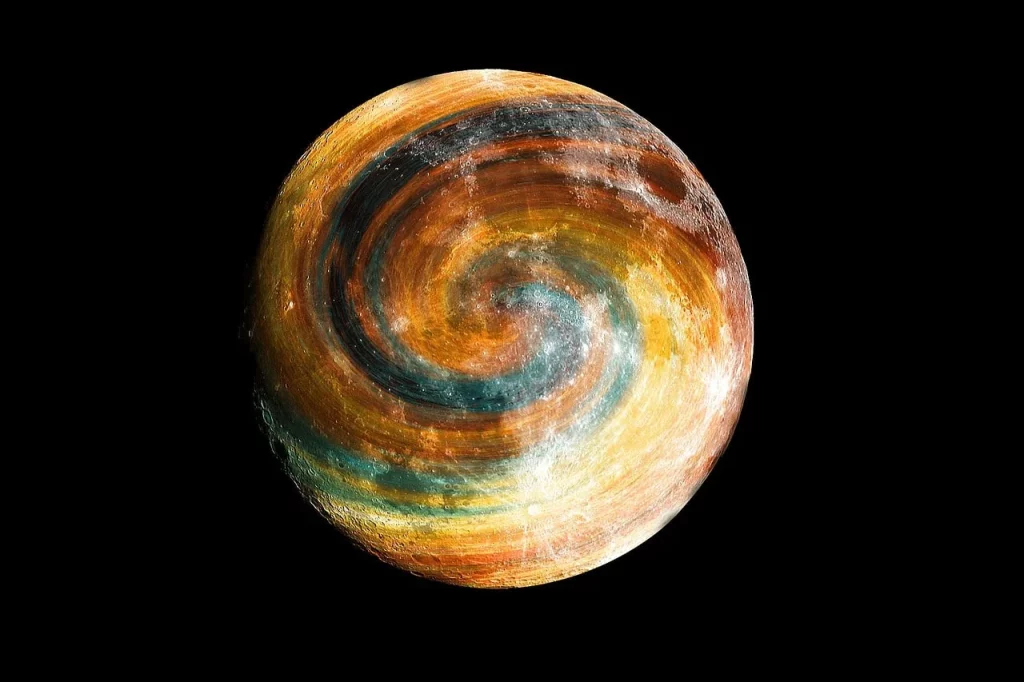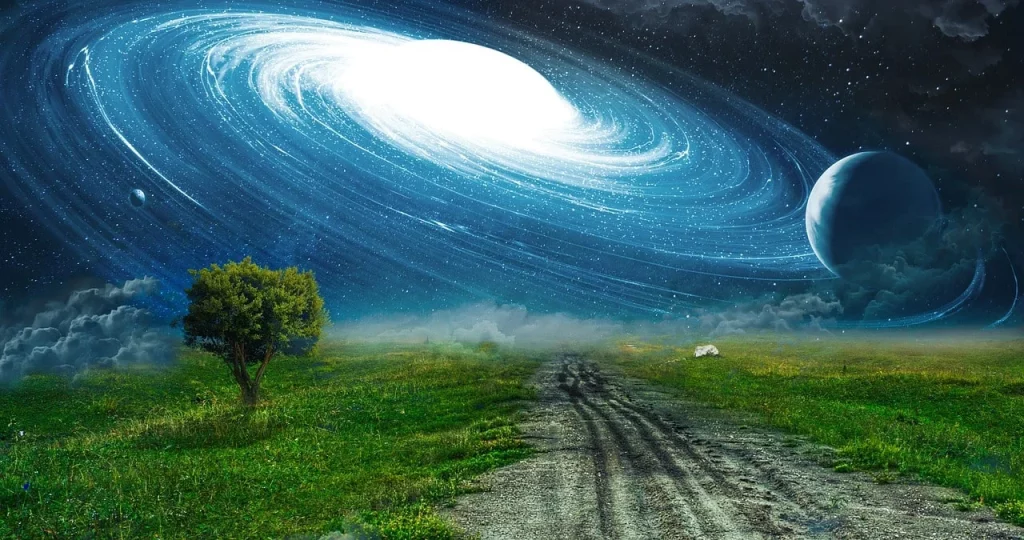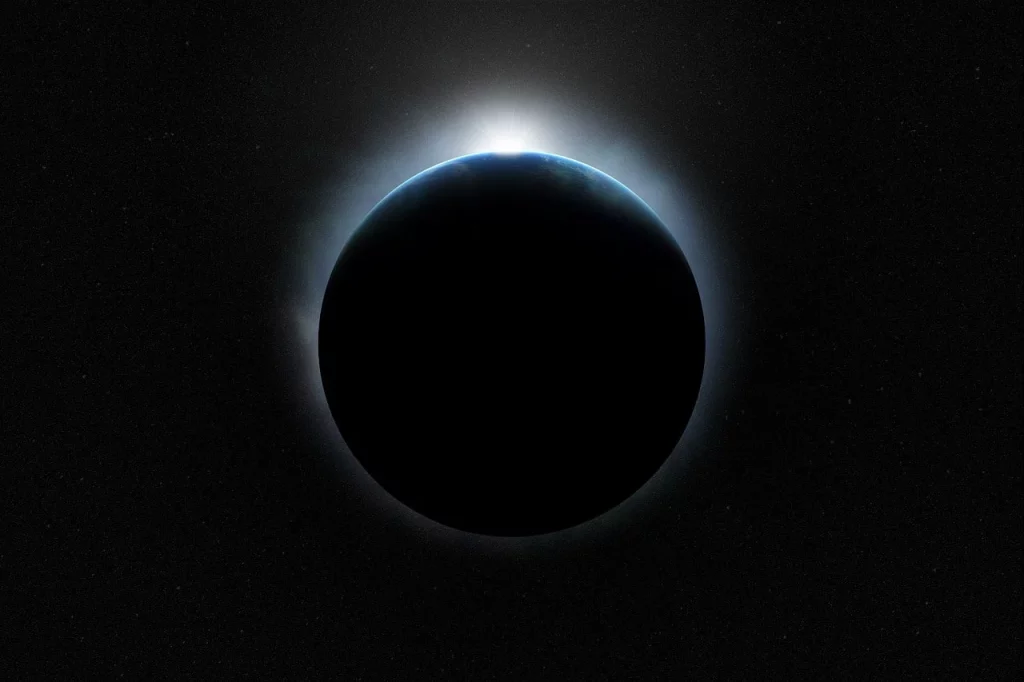Every night, the stars above whisper stories of distant worlds, each with its own set of mysteries and marvels. As a child, I was captivated by these tales, dreaming of the secrets the planets held. Now, I invite you to join me in reigniting that sense of wonder with all these interesting planet facts.
Together, we’ll journey through our solar system, from the sunbaked surfaces of Mars to the icy realms of Neptune, uncovering the incredible diversity and beauty that dwell in the heavens. Let’s embark on a quest to understand our place among the stars.
Mars is there, waiting to be reached.
Buzz Aldrin
Planet Facts
Dive into the wonders of our solar system and beyond with these captivating facts. Read closely and test your knowledge with the quiz I created at the end to see if you can truly call yourself a planet expert.
- Venus rotates counter to the direction of most planets in our system.
- The solar system’s tallest peak, Olympus Mons on Mars, stands nearly three times the height of Earth’s Mount Everest.
- Neptune’s moon, Triton, follows a unique backward orbit around the planet.
- The Great Red Spot on Jupiter is a gigantic storm that has persisted for over four centuries.
- Mercury sees extreme temperature swings from over 800°F by day to -290°F at night due to its lack of atmosphere.
- Uranus orbits the sun nearly on its side due to an extreme axial tilt.
- The icy rings around Saturn contain particles as large as mountains.
- The day on Earth gets longer by about 1.7 milliseconds every century as its rotation slows.
- A heart-shaped ice feature on Pluto is as large as Texas and Oklahoma combined.
- The hottest planet in our solar system, Venus, suffers from a severe greenhouse effect.
- With over 79 moons, Jupiter holds the record for the most satellites.
- Earth uniquely hosts water in solid, liquid, and gas forms.
- Giant dust storms can engulf Mars, lasting for months and covering the entire planet.

- Neptune radiates more energy than it absorbs from the sun, hinting at internal heat sources.
- Shadowed craters on Mercury harbor frozen water, despite the planet’s close distance to the Sun.
- If you could place Saturn in water, it would buoy due to its lower density than water.
- Discovered in 1977, Uranus’s rings are faint and number 13.
- Walking on Venus would feel like moving underwater due to its thick atmosphere.
- The largest moon in the solar system, Ganymede, belongs to Jupiter and surpasses Mercury in size.
- A protective magnetic field surrounds Earth, shielding it from harmful cosmic and solar radiation.
- Enceladus, a moon of Saturn, ejects ice into space, contributing to one of the planet’s rings.
- Venus completes its orbit around the Sun quicker than it completes a single rotation on its axis.
- Mathematical calculations led to the discovery of Neptune before it was observed through a telescope.
- Olympus Mons on Mars is the largest known volcanic crater in the solar system, with a diameter of about 600 km.
- The moon is drifting away from Earth at about 1.5 inches (3.8 cm) annually.
- Jupiter generates more heat than it receives from the Sun due to internal gravitational compression.
- Venus and Uranus rotate clockwise, known as retrograde rotation, unlike most planets.
- Pluto’s elliptical orbit sometimes brings it closer to the Sun than Neptune.

- The only planets without moons in our solar system are Mercury and Venus.
- Our atmosphere extends up to 10,000 km into space, but human life exists within the bottom 11 km.
- An early colossal collision is believed to have knocked Uranus over, leading to its extreme tilt.
- Similar to Earth, Mars experiences seasonal changes due to its tilt.
- The fastest winds in the solar system, reaching speeds up to 1,500 mph, are found on Neptune.
- Temperatures on Pluto can drop to a chilling -375°F (-225°C).
- Earth is the only planet named not after a deity but from an Old English word meaning ground.
- All other planets could fit inside Jupiter with space to spare, highlighting its immense size.
- Over 1,600 volcanoes dot the surface of Venus, though none are currently known to be erupting.
- Liquid methane and ethane lakes and rivers exist on Saturn’s moon, Titan, resembling features of Earth.

- An orbit around the sun takes just 88 days for Mercury, making its year extremely short.
- The blue hue of Uranus is due to methane in its atmosphere, which reflects blue light.
- A single flyby by Voyager 2 in 1989 is the source of most of our knowledge about Neptune.
- Metallic hydrogen might make up the core of Jupiter, conducting electricity like a metal.
- The densest planet in our solar system is Earth, with an average density of 5.52 g/cm³.
- Evidence of ancient rivers discovered by the Curiosity Rover suggests Mars once had flowing water.
- If there were a large enough body of water, Saturn could float due to its low density.
- A day on Venus is longer than its year, showcasing its slow rotation and swift orbit around the Sun.
- Discovered by Voyager 2 in 1989, the Great Dark Spot on Neptune had vanished by 1994.
- As Pluto nears the Sun, its atmosphere expands and then collapses as it moves away, a unique behavior among solar system bodies.
- The Valles Marineris on Mars is one of the largest canyons in the solar system, stretching over 2,500 miles and reaching depths of up to 7 miles.
- Europa, one of Jupiter’s moons, is believed to have a subsurface ocean beneath its icy crust, potentially harboring extraterrestrial life.
Planet Myths

Having journeyed through the cosmos of planetary knowledge, let’s now embark on a quest to demystify the stars. In the upcoming section, we will separate the truth from the common myths.
- Mercury is the Hottest Planet
Despite being closest to the sun, Mercury isn’t the hottest planet. That title goes to Venus, enveloped in thick clouds of carbon dioxide, creating a runaway greenhouse effect that keeps its surface temperature around 465°C, far hotter than Mercury’s. - A Year on Jupiter is Shorter than on Earth
Jupiter’s year is significantly longer than Earth’s, taking about 12 Earth years to complete one orbit around the sun. Its massive size doesn’t speed up its orbital journey; it actually makes it longer due to the vast distance it travels. - The Rings of Saturn are Solid
Saturn’s rings might look solid from afar, but they’re actually made of billions of ice and rock particles. These range in size from tiny grains to gigantic boulders, all orbiting Saturn and reflecting sunlight to create that stunning visual effect. - All Planets Orbit the Sun in a Perfect Circle
The orbits of the planets are not perfect circles but ellipses. This means they have points where they are closer to and farther from the sun. Earth’s orbit, for example, is slightly elliptical, leading to variations in distance from the sun throughout the year. - Venus is Earth’s Twin in Terms of Habitability
Often called Earth’s twin because of its similar size and mass, Venus is anything but habitable. Its surface is a hellish landscape with temperatures hot enough to melt lead and atmospheric pressure 90 times that of Earth’s, making it an extremely hostile environment for life as we know it.
No products found.
Planet Quotes

Let’s explore some quotes from notable figures together. Below, you can find my list. Feel free to share yours in the comments so I can add them here as well.
Venus is too hot, Mars is too cold, and Earth is just right.
Carl Sagan
Carl Sagan, a renowned astronomer, succinctly captures the unique habitability of Earth in the solar system.
Jupiter’s moons are a wonderful example of how the universe can surprise us.
Galileo Galilei
Galileo Galilei, the pioneering astronomer, marveled at the unexpected discoveries awaiting us in space.
Saturn is not going anywhere, the rings will wait for you.
David R. Scott
David R. Scott, an astronaut, speaks to the enduring beauty and patience of Saturn’s iconic rings.
To confine our attention to terrestrial matters would be to limit the human spirit.
Stephen Hawking
Stephen Hawking, a theoretical physicist, encourages looking beyond Earth to understand the cosmos.
The Earth is the cradle of humanity, but mankind cannot stay in the cradle forever.
Konstantin Tsiolkovsky
Konstantin Tsiolkovsky, a rocket science pioneer, highlights the necessity of space exploration for human progress.
Planet FAQ

The FAQs stand between you and the quiz, offering a final moment of learning and reflection on the planets. Read each answer carefully if you want to succeed.
- Will planets ever collide?
While extremely rare in our solar system due to the vast distances and stable orbits of the planets, collisions have occurred in its early history and can happen in the wider universe. Planetary collisions are more likely during the chaotic period of a solar system’s formation. For example, it’s believed that the Earth once collided with a Mars-sized object, leading to the creation of our moon! - Can planets orbit black holes?
Yes, planets can indeed orbit black holes, and it’s as fascinating as it sounds! Just as planets orbit stars due to gravity, they can also orbit around black holes. If a planet is at a safe distance where the black hole’s gravitational pull doesn’t tear it apart, it can maintain a stable orbit. In fact, astronomers have found evidence of planets orbiting supermassive black holes in other galaxies, showcasing the diverse possibilities of cosmic structures. - Are planets mentioned in the Bible?
The Bible, being an ancient text, doesn’t explicitly mention planets as we understand them today in astronomy. It primarily focuses on spiritual teachings and moral guidance rather than detailed astronomical descriptions. However, it does refer to celestial bodies like stars and the “lights in the sky,” which some interpret as including planets. - Can planets explode?
While planets don’t explode in the same way stars might (such as by going supernova), they can undergo catastrophic events. For example, a significant impact by a large enough object can cause massive destruction. However, the internal processes of a planet like Earth don’t lead to an “explosion” in the sense of blowing apart into space. - Are planets stars?
No, planets and stars are quite different! Stars are massive celestial bodies that produce their own light and heat through nuclear fusion in their cores, like our sun. Planets, on the other hand, are smaller bodies that orbit stars and do not generate light or heat through fusion. They might reflect the light of their star, which is why we can see them from Earth.
No products found.
Planet Quiz

Welcome to the ultimate planet quiz! Prepare for an out-of-this-world challenge, and remember, if you don’t get any questions right, you might find yourself lost in space without a GPS or trading your spaceship for a unicycle on Pluto!
Planet Merch
If you are a true fan of planets, then you definitely need to check out our merchandise. You can find T-shirts, hoodies, mugs, and tote bags for your favorite designs. Feel free to check out all the other designs in our shop.
Conclusion
In our journey across the cosmos to explore the remarkable planets of our solar system, we’ve embarked on a celestial adventure filled with astonishing discoveries and mind-boggling facts. From the blistering heat of Mercury to the frigid expanse of Pluto, each planet has its own unique tale to tell.
As we conclude this cosmic expedition, it’s impossible not to feel a sense of wonder about the vastness of the universe and the captivating worlds that inhabit it. As always, until next time, stay curious.
1 Source Used For This Article


2 Comments
One mind blowing fact that you can add is this: If you were to take all the planets in our solar system and line them up end-to-end, they would fit comfortably between the Earth and the Moon, with a few thousand kilometers to spare.
It always makes me wonder about how small we are.
Wow, while I researched quite deep for this article I never found something that. Thanks for sharing.